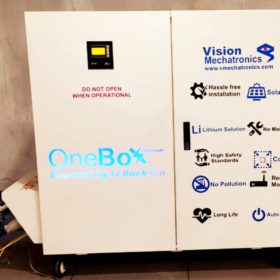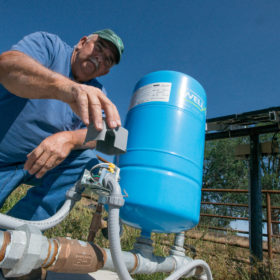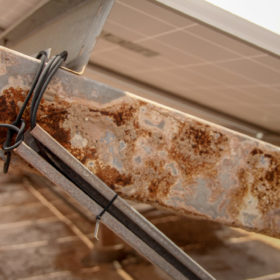Debunking feeder segregation
Feeder segregation, i.e., the installation of dedicated electricity supply lines for agriculture, is often celebrated as the solution to the electricity utilities’ pain point of free or highly subsidized electricity supply for agriculture. But does it address the root cause of the issue?
EESL commissions 8 MW solar plant for MSEDCL
The solar plant, installed at Devdaithan village in Maharashtra’s Ahmednagar district, will provide eight hours of uninterrupted electricity for agricultural loads served by the respective feeder.
Ministry drafts policy for rural solar appliance roll-out
The Ministry of New and Renewable Energy is eager to ramp up deployment of solar-powered dryers, cold storage and charkhas across the nation’s 600,000 villages.
A plug-and-play solar-powered battery back-up solution for the home
The OneBox, from Indian manufacturer Vision Mechatronics, consists of a lithium battery, hybrid inverter and solar charge controller to give a hassle-free solution for electricity back-up during power outages. Solar rooftop owners are offered a grid feed feature to maximize net metering income from any excess power generated.
A multi-level inverter for solar water pumps
Scientists in India have tested a new inverter topology with a single-phase, induction-motor water pump. The seven-level inverter, with five power semiconductor switches, is said to be particularly efficient at reducing switching losses thanks to a pulse width modulation technique.
Assessing metal leaching from PV modules dumped in landfill
An Indian Institute of Technology research team analyzed around 300 studies about PV panel waste containing carcinogenic metals. The researchers said solar module recycling is not economically profitable and policy support is necessary to avoid panels being dumped in landfill.
Odisha fire stations to go solar
The state will contract for a total 1.73 MWp of rooftop generation capacity with all the panels supplied manufactured in India.
System integrators must be allowed for KUSUM projects: NSEFI
Further, the lobby group has asked the ministry to remove the domestic content requirement for solar cells at least for the first year, while also highlighting the need to specify standards or guidelines for setting up of agrivoltaics systems in farm lands.
IRENA and the UN ink agreement in New Delhi to combat desertification with renewables
A memorandum of understanding signed by the institutions was not solar specific but the use of PV modules for shading, especially in agriculture, can reduce water consumption and help halt the expansion of deserts.
Solar irrigation product converts sunlight directly into motion
The invention converts energy produced by PV cells directly into mechanical motion without batteries or power electronics. Its developers claim the solar motor can drive irrigation water pumps and ventilation turbines for more than 20 years without maintenance.















